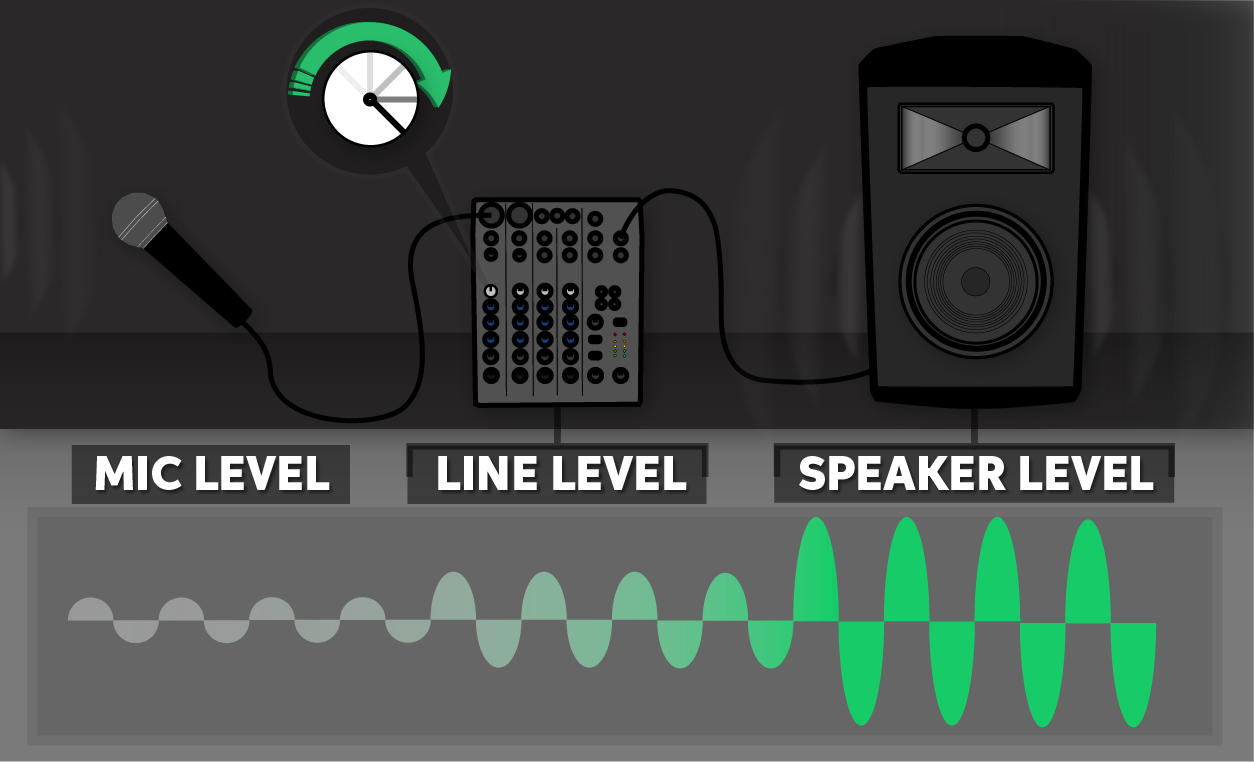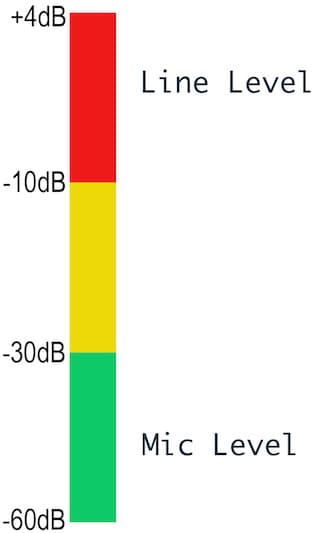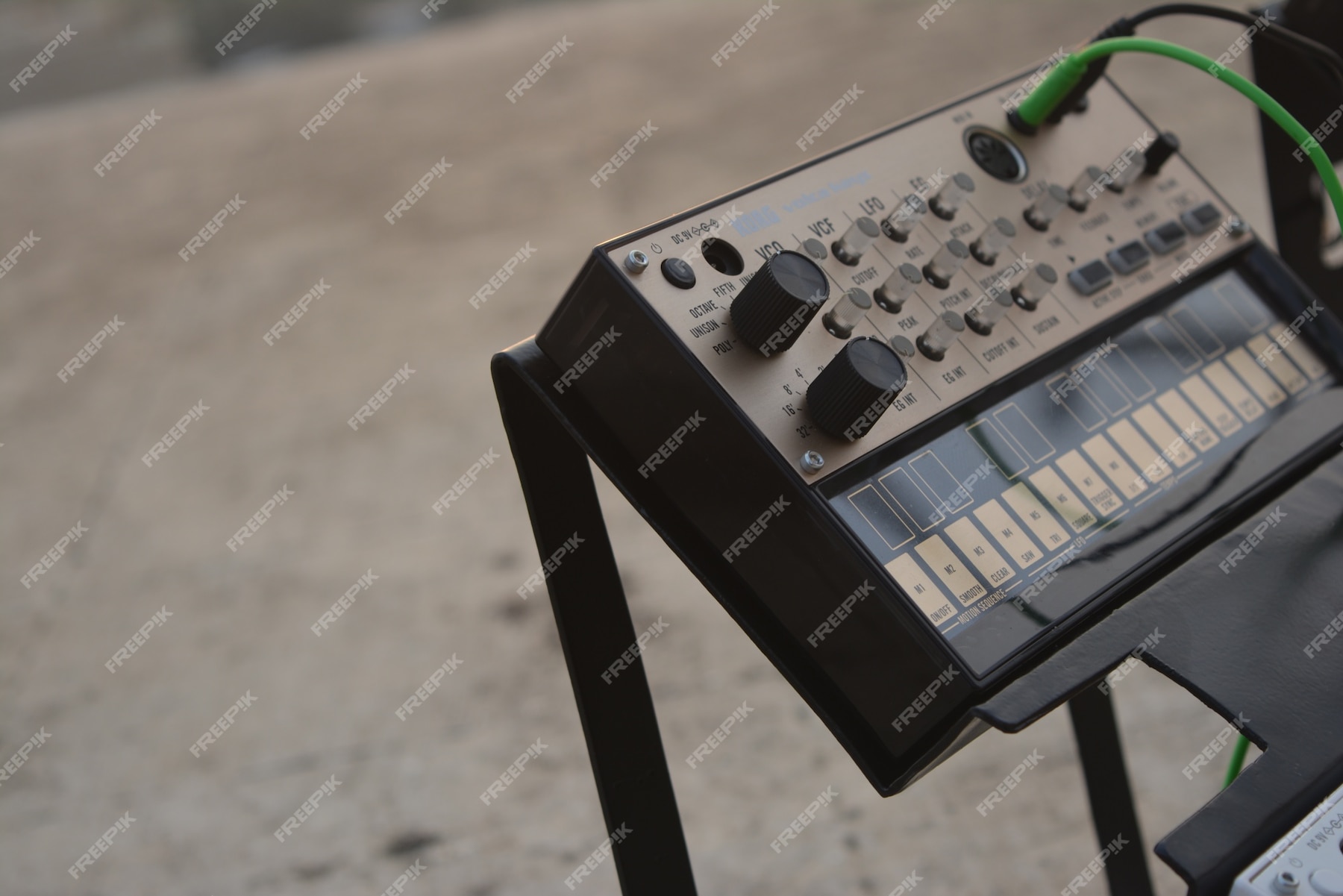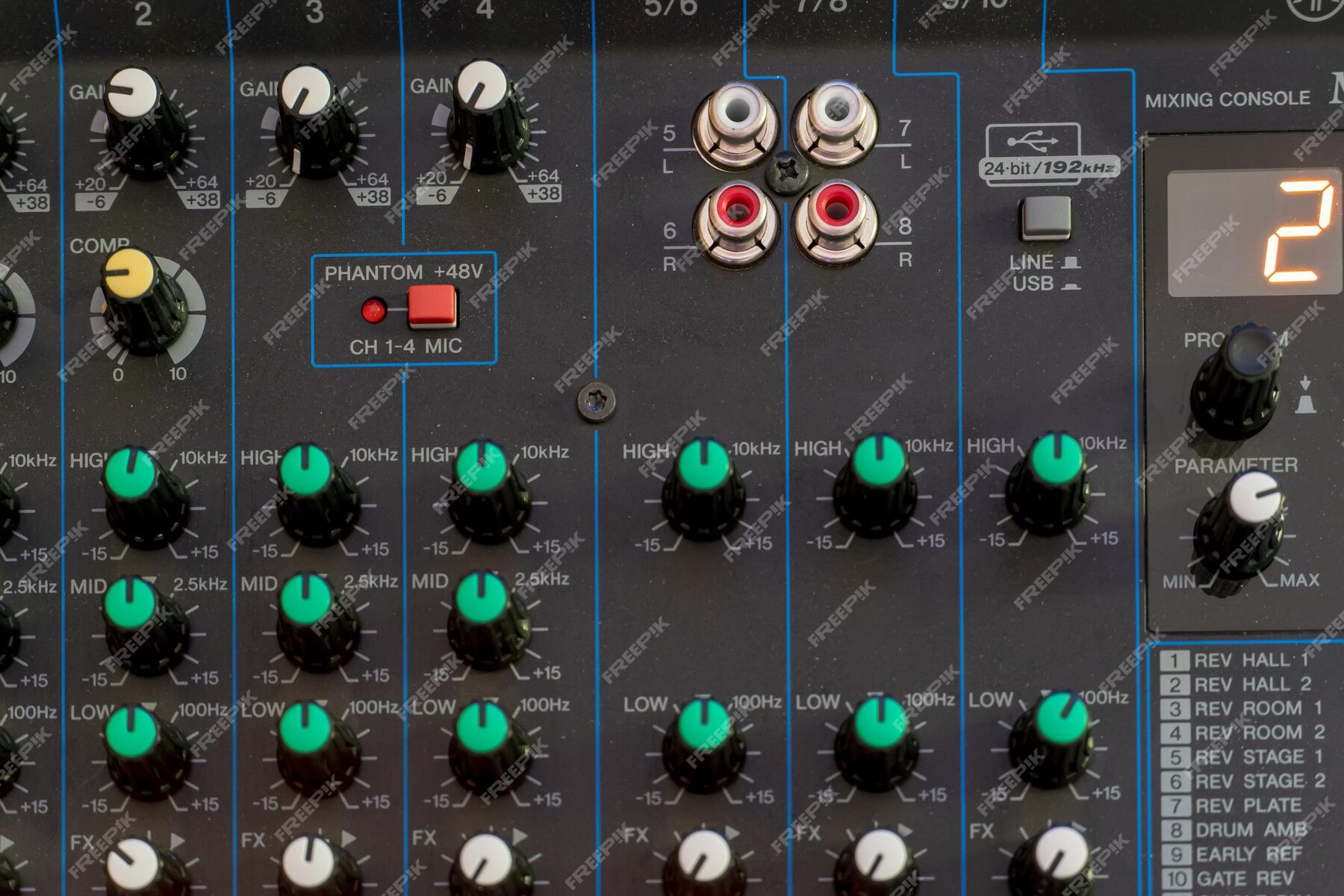Signal Source Types
Introduction
When it comes to audio signals, there are two primary types: mic and line. Understanding the differences between these two types of signals can help you to achieve better sound quality in your recordings and live performances. Potentially, it could save any gear from costly or unrepairable damages.

What is a Mic Audio Signal?
A mic audio signal is an electrical signal that’s generated by a microphone. The strength of a mic signal is relatively weak, as microphones generate a weaker electrical signal than line-level devices. The level of a mic signal is typically around 0.002 to 0.003 volts.

Microphones are designed to convert sound waves into electrical signals, and there are several different types of microphones, including dynamic and condenser microphones. Dynamic microphones are more rugged and versatile, and are ideal for capturing loud sounds and for use on stage or in the studio. Condenser microphones are more sensitive and have a wider frequency response, making them ideal for recording acoustic instruments, vocals, and other sources that require more detail.
When you connect a microphone to an input on a mixer or audio interface, you’ll typically be using a mic level input. Mic level signals are typically low-level signals, and they’re often unbalanced, meaning that they’re transmitted through a single conductor.

Microphone level is usually specified between -60 and -40 dBu. (dBu and dBV are decibel measurements relative to voltage). Due to the fact that mic signals will tend to be much lower compared to line-level, they will often require a “pre-amp”. This device can boost mic signals to line level without introducing electrical noise. This is just like electric guitars that need amplifiers to boost the signal.
Read more about Mic vs Line Signals
What is a Line Audio Signal?
A line audio signal is an electrical signal that’s generated by a line-level device. Line-level devices include instruments, audio interfaces, and other electronic equipment. The level of a line-level signal is typically much stronger than a mic signal, ranging from 0.316 to 1.23 volts.

When you connect a line-level device to an input on a mixer or audio interface, you’ll typically be using a line-level input. Line-level inputs are typically balanced, meaning that they’re transmitted through two conductors, which helps to reduce noise and interference. Line-level signals are ideal for connecting instruments, audio interfaces, and other electronic devices to a mixer or audio interface.
Differences Between Mic and Line Signals
There are several differences between mic and line audio signals. One of the primary differences is the level of the signal. Mic signals are typically much weaker than line signals, which makes them ideal for recording and amplifying sources that have a low output level. Line signals, on the other hand, are ideal for amplifying and recording sources that have a high output level.

Another difference between mic and line audio signals is the impedance. Impedance refers to the electrical resistance of a device. Microphones typically have a high impedance, which means that they’re more susceptible to noise and interference. Line-level devices, on the other hand, typically have a low impedance, which means that they’re less susceptible to noise and interference.

The type of cable that’s used to transmit the signal is also different between mic and line audio signals. Mic signals are typically transmitted using shielded cables, which help to reduce interference and noise. Line signals, on the other hand, are typically transmitted using balanced cables, which help to further reduce interference and noise.
-10 dBV for consumer equipment (like MP3 and DVD players)
+4 dBu for professional equipment (mixing desks and signal processing gear)
When to Use Mic Signals
Mic signals are ideal for recording and amplifying sources that have a low output level. They’re great for capturing acoustic instruments, vocals, and other sources that require a lot of detail. Mic signals are also used for capturing sound effects, ambient noise, and other types of sound that can’t be captured with a line-level device.

When to Use Line Signals
Line signals are ideal for amplifying and recording sources that have a high output level. They’re great for connecting instruments, audio interfaces, and other electronic devices to a mixer or audio interface. Line signals are also used for connecting effects processors, equalizers, and other types of signal processing equipment.

Considerations
Phantom Power
Certain microphones require extra power in order to be used. However, be careful, applying phantom power to incompatible devices could damage their parts, even to the point of no repair. At times there will be a phantom switch on every channel. Others will have a switch in the master section to enable phantom power on a multiple channels.

Input Gain Knob Scaling Factor
There are 2 connectors that most commonly found on mixer inputs; XLR for Mic inputs and 1/4 inch Line inputs. The behavior of the input gain stage is dramatically different depending on which input is used. Due to the fact as a result of the mic signal now using the mic preamp.

LINE – the gain knob boosts or reduces the signal by ranges of (-40 to +40 db).
MIC – the gain knob boosts from ranges of (0-90 db).
Getting Good Levels at the Source
Capture sound correctly from the start with clear and healthy levels. This is essential when working with microphones. If mismanaged, it could lead to unwanted artifacts introduced to the signal, such as noise. Consequently, everything following down the signal path will also contain these poor characteristics.
Conclusion
In summary, mic and line audio signals differ in terms of their strength, impedance, and the type of cable that’s used.